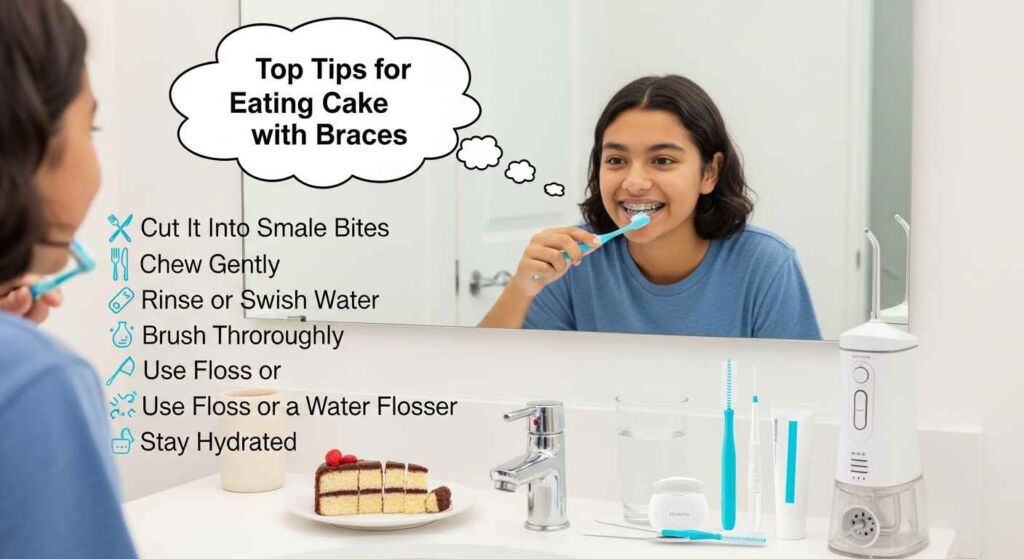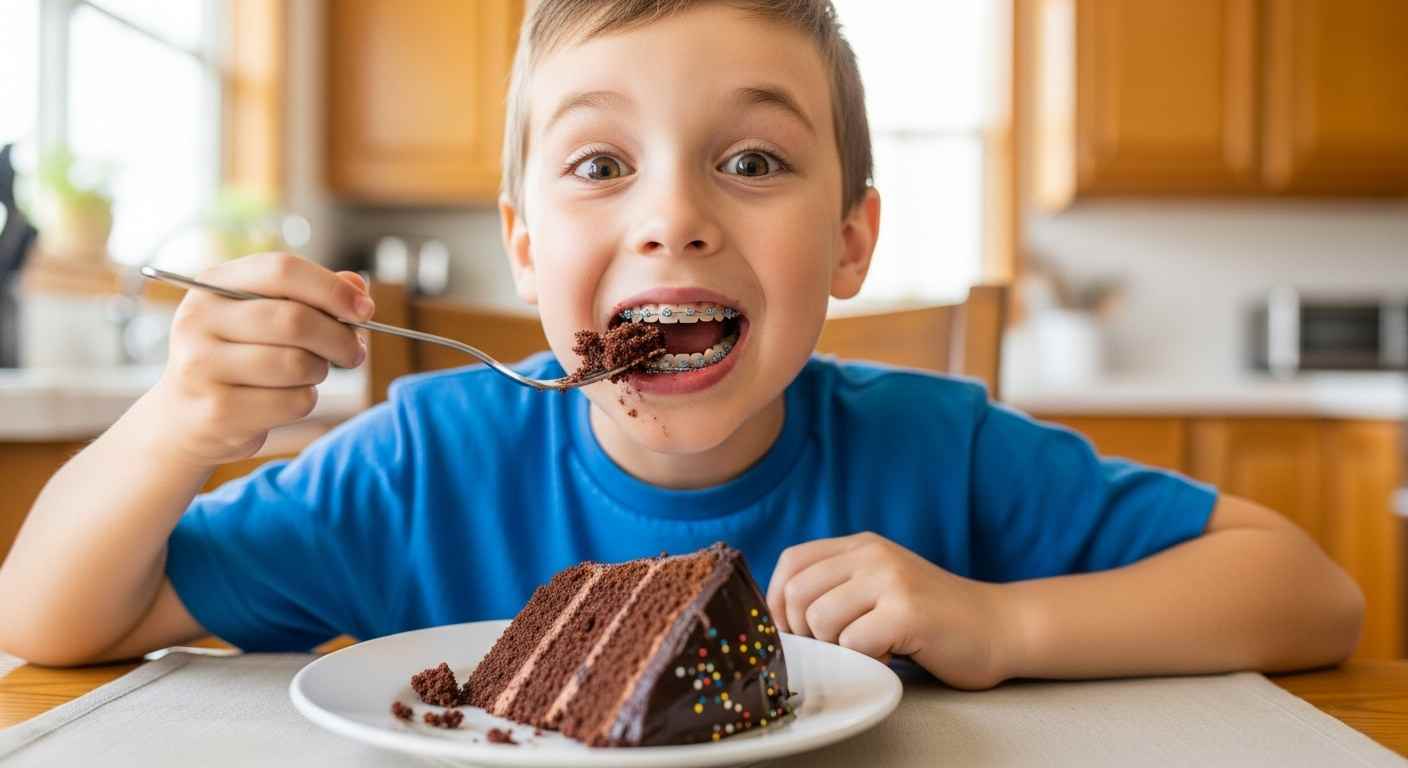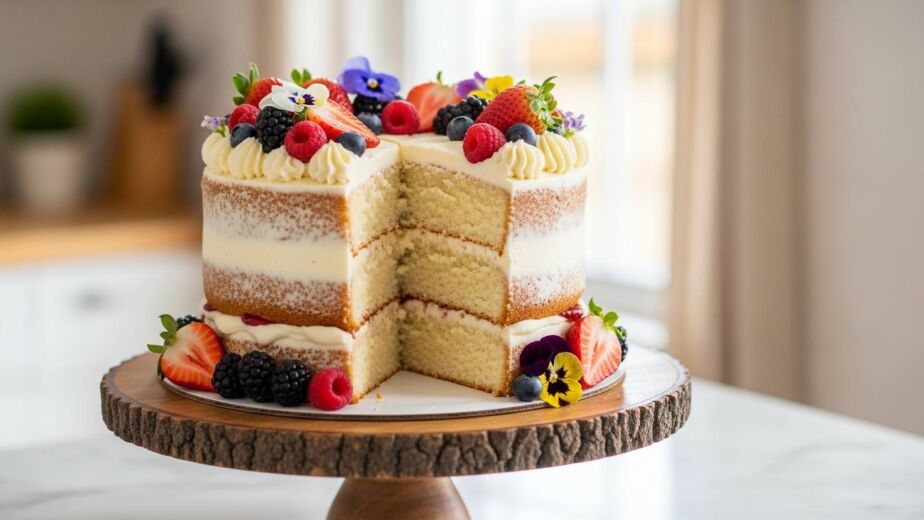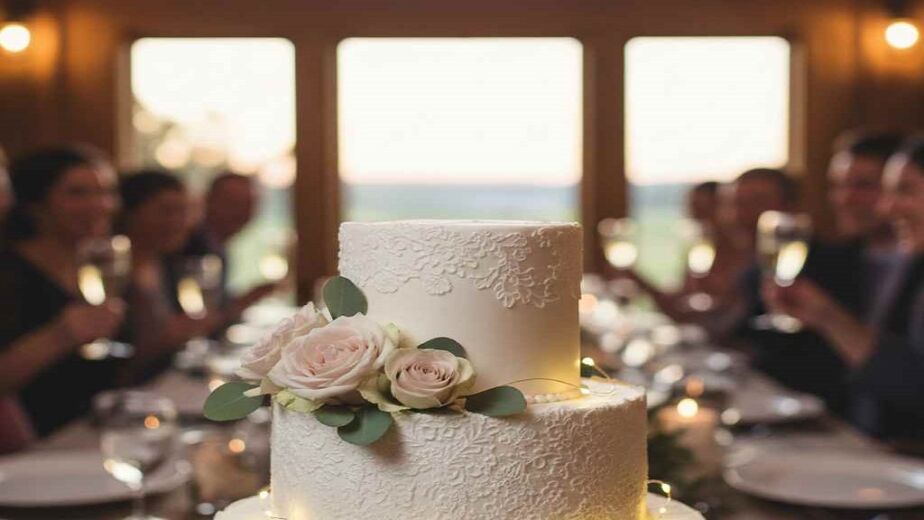Absolutely – you can still enjoy cake with braces, as long as you pick the right kind and eat it carefully. Orthodontists emphasize that soft, fluffy cakes are generally safe for braces. For example, Dr. Suzanne Stock notes that “most cakes are lightweight and tasty, and are completely acceptable to eat with braces,” provided there are no crunchy mix-ins. In other words, simple sponge cakes, chiffon cakes or angel-food cakes are fine. Just steer clear of hard nuts, sticky caramel, or crunchy toppings. NewSmile Dental concurs: “Cake, in its soft, fluffy glory, is on the braces-friendly list,” so bite into that piece of birthday cake – just be mindful of its ingredients.
Choose Soft Cakes. Opt for cakes that are tender and easy to chew. Good examples include vanilla or chocolate sponge cake, chiffon cake, pound cake or cupcakes without hard toppings. Creamy frostings (buttercream or whipped cream) are okay in moderation. You might even enjoy light cakes like angel-food or tiramisu. The key is no hard bits at all – absolutely avoid fruitcake with nuts, carrot cake loaded with walnuts, rocky road brownies, or cakes with caramel, taffy, toffee, or candy pieces. Keeping cake soft means it won’t bend wires or dislodge brackets when you bite into it.
- Safe Cake Types: Soft, homemade or bakery cakes (sponge, chiffon, angel food), moist cupcakes, and any cake cut into small pieces.
- Unsafe Cakes: Cakes with hard or sticky mix-ins (nuts, candy, sticky caramel, or hard sprinkles), and very chewy layers. These can catch on brackets and even break wires.
Why Be Cautious? Braces are delicate, and hard or sticky foods are their worst enemies. As orthodontist Dr. Ken Lawrence explains, “Hard and sticky foods will break and/or damage wires and brackets”. Bent wires or popped-off brackets mean extra trips to the orthodontist and longer treatment. Equally important, sugary cakes can fuel cavities while your braces are on. Hodges Orthodontics warns that “foods high in sugar content could cause cavities, [and] calcium build-up” around braces. In short, every time sugar sticks in your braces it feeds bacteria and can create white spots (decalcification) on the teeth.
Top Tips for Eating Cake with Braces

Even when enjoying a soft cake, follow these expert tips to protect your teeth and braces:
- Cut It Into Small Bites: Don’t bite directly with your front teeth. Use a fork or knife to portion the cake. Smaller pieces mean less stress on brackets.
- Chew Gently: Take your time and chew slowly, especially if your braces were tightened recently. Sensitive teeth heal faster when you stick to soft bites.
- Rinse or Swish Water: After eating cake, swish water around your mouth to dislodge crumbs from the brackets. This simple step prevents sugary particles from lodging in tiny crevices.
- Brush Thoroughly: Brush soon after dessert. The American Association of Orthodontists stresses that even “softer, melt-in-your-mouth” sweets can leave residue that leads to cavities if not cleaned out. Use a soft-bristle or electric brush to clean around each bracket and wire.
- Use Floss or a Water Flosser: Floss threaders or an orthodontic floss can reach between braces, and water flossers are great for flushing out stubborn bits.
- Stay Hydrated: Drinking water not only hydrates you, it also helps wash away sugar after you eat. Carry a bottle to sip between bites if needed.
With these steps, brace-wearers can still celebrate birthdays and holidays without missing out. The photo above shows a teenager enjoying cake confidently – braces and all. Just remember the golden rules: take small bites, avoid hard toppings, and clean your teeth well afterwards. Orthodontic pros remind us that “soft cake won’t damage your braces, but biting into hard or sticky toppings can”. So go ahead and indulge your sweet tooth, but keep extra toothbrushes and floss handy!
Brushing Up on Oral Care
Even the safest cake is still sugary, so pay extra attention to oral hygiene. Orthodontists emphasize that frequent brushing and flossing are essential with braces. Sugary snacks encourage plaque to settle around brackets, which can lead to decay. Use fluoride toothpaste and brush after every sugary treat. Carry a travel brush or pack a small interdental brush for school or parties. Some patients even use special plaque-disclosing toothpaste or tablets at home to check for missed spots. Remember, your braces are a temporary step toward a great smile – keeping them clean now means fewer problems later.
Frequently Asked Questions
Can I eat chocolate or flavored cake with braces?
Yes – any flavor of cake is fine as long as the texture is soft. A chocolate or marble cake is okay if it doesn’t have nuts, fudge or hard pieces. For example, a smooth chocolate sponge or a moist berry cake are both good choices.
Should I avoid cake entirely after getting braces tightened?
You don’t have to! Right after an adjustment your teeth may be tender, so you might prefer super-soft foods (like pudding or yogurt) initially. But if you can tolerate it, cut the cake into tiny pieces and chew carefully. Your orthodontist often advises cutting food up during this sensitive period to reduce discomfort.
What about cake frosting or icing?
In moderation, frosting is fine – just be mindful of sugar. As the NewSmile guide recommends: “Yes, [icing] in moderation. Choose lighter, less sugary icings… and remember to clean your teeth well afterward”. Thin spreads of buttercream or whipped cream are better than thick layers of sugary fondant. Always brush your teeth after enjoying a sweet topping.
Will cake damage my braces if I bite into it?
Soft cake itself won’t hurt your braces. The danger comes from hard or sticky bits. As we saw, a “soft cake won’t damage your braces, but biting into hard or sticky toppings can”. That means if you accidentally get a bit of crust or candy on a fork-full, chew that part extra gently or remove it altogether.
How should I clean my teeth after eating cake?
Be diligent! Brushing immediately is best – use a soft brush at a 45° angle to clean around wires and brackets. Don’t forget to floss carefully, or use a water flosser, to remove any crumbs stuck between teeth. A mouthwash with fluoride can also help protect enamel after sweets. By keeping up with these steps, you’ll keep your braces safe and your smile healthy.
In summary, you can have your cake and eat it too – literally! Cakes that are soft and free of hard nuts or candies are braces-friendly. Enjoy special occasion treats while your braces are on; just cut them into small bites, chew gently, and brush thoroughly afterwards. With careful eating and good oral hygiene, braces won’t stop you from celebrating with cake.



